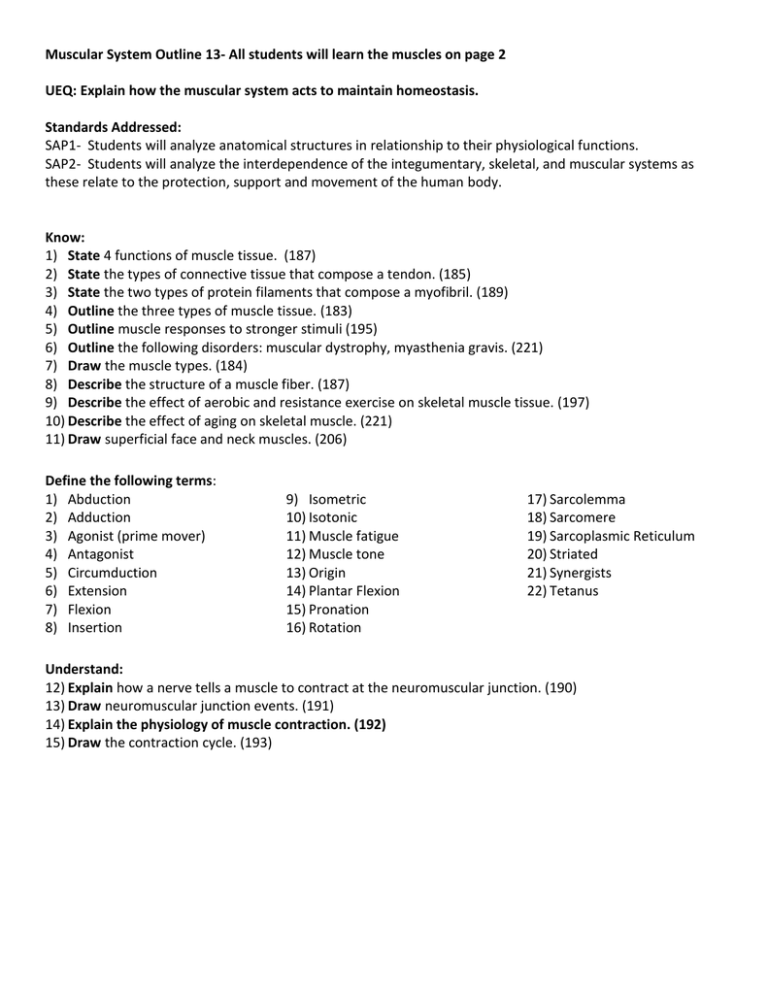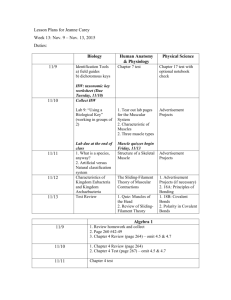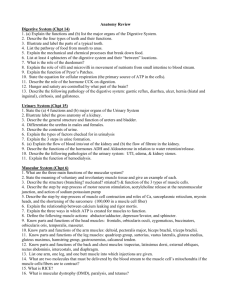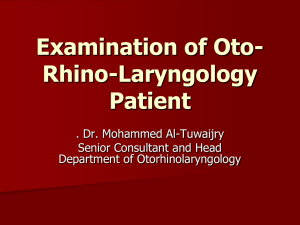Muscular System Outline 13
advertisement

Muscular System Outline 13- All students will learn the muscles on page 2 UEQ: Explain how the muscular system acts to maintain homeostasis. Standards Addressed: SAP1- Students will analyze anatomical structures in relationship to their physiological functions. SAP2- Students will analyze the interdependence of the integumentary, skeletal, and muscular systems as these relate to the protection, support and movement of the human body. Know: 1) State 4 functions of muscle tissue. (187) 2) State the types of connective tissue that compose a tendon. (185) 3) State the two types of protein filaments that compose a myofibril. (189) 4) Outline the three types of muscle tissue. (183) 5) Outline muscle responses to stronger stimuli (195) 6) Outline the following disorders: muscular dystrophy, myasthenia gravis. (221) 7) Draw the muscle types. (184) 8) Describe the structure of a muscle fiber. (187) 9) Describe the effect of aerobic and resistance exercise on skeletal muscle tissue. (197) 10) Describe the effect of aging on skeletal muscle. (221) 11) Draw superficial face and neck muscles. (206) Define the following terms: 1) Abduction 2) Adduction 3) Agonist (prime mover) 4) Antagonist 5) Circumduction 6) Extension 7) Flexion 8) Insertion 9) Isometric 10) Isotonic 11) Muscle fatigue 12) Muscle tone 13) Origin 14) Plantar Flexion 15) Pronation 16) Rotation 17) Sarcolemma 18) Sarcomere 19) Sarcoplasmic Reticulum 20) Striated 21) Synergists 22) Tetanus Understand: 12) Explain how a nerve tells a muscle to contract at the neuromuscular junction. (190) 13) Draw neuromuscular junction events. (191) 14) Explain the physiology of muscle contraction. (192) 15) Draw the contraction cycle. (193) Muscular System Outline Muscles to Identify: c) Fibularis longus d) Fibularis brevis 1) Anterior thoracic / abdominal (7) a) Serratus anterior b) Rectus abdominus c) External oblique d) Deltoid e) Pectoralis major f) Sternocleidomastoid g) Trapezius 2) Anterior arm (6) a) Biceps brachii b) Brachialis c) Brachioradialis d) Thenar muscles e) Flexor carpi ulnaris 3) Anterior upper leg (9) a) Sartorius b) Pectineus c) Adductor longus d) Adductor magnus e) Gracilis f) Vastus medialis g) Rectus femoris h) Vastus lateralis i) Iliopsoas 4) Anterior lower leg (4) a) Tibialis anterior b) Soleus 5) Posterior Head (2) a) Masseter b) Temporalis 6) Anterior head (7) a) Frontalis b) Orbicularis oculi c) Orbicularis oris d) Zygomaticus e) Platysma f) Buccinator 7) Posterior Thoacic/ Abdominal (3) a) Teres minor b) Teres major c) Latissimus Dorsi 8) Posterior Leg (7) a) Gluteus Maximus b) Gluteus medius c) Biceps femoris d) Semitendinosus e) Semimembranosus f) Gastrocnemius 9) Posterior arm (2) a) Triceps brachii b) Extensor digitorum







